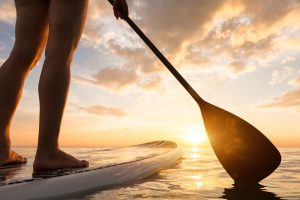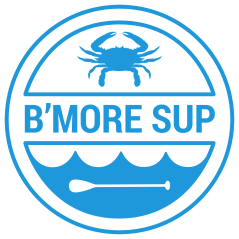Components of a paddle!
 To me, the single most important piece of equipment in the sport of SUP is your paddle. Yep, that’s right. I believe a paddle is more important than the board itself!! I see so many clients going out and spending thousands of dollars on high end paddle boards and then using a cheap, plastic, adjustable paddle. This is all wrong! I used to travel quite a bit to race and teach SUP trainings around the world and the one piece of equipment I would never leave home without was my paddle. I could use any board and have a decent race, as long as I had my carbon fiber paddle!
To me, the single most important piece of equipment in the sport of SUP is your paddle. Yep, that’s right. I believe a paddle is more important than the board itself!! I see so many clients going out and spending thousands of dollars on high end paddle boards and then using a cheap, plastic, adjustable paddle. This is all wrong! I used to travel quite a bit to race and teach SUP trainings around the world and the one piece of equipment I would never leave home without was my paddle. I could use any board and have a decent race, as long as I had my carbon fiber paddle!
So, whether you have your own board or are simply a regular at B’More SUP using our rental boards, if you are truly invested in the sport of SUP and plan to spend a lot of time on the water this summer, I would highly recommend educating yourself on paddles and investing in one of your own!
In this blog post I will cover the most important factors to consider when purchasing a paddle so that you can select the right type of paddle for your paddling desires! I will not be recommending specific paddles (that will come in a future post) but will instead explain the most important components of a paddle.

Let’s start with paddle material….
Most rental paddles are made out of plastic and/or aluminum. We use plastic adjustable paddles at our B’More SUP locations. This is because they are super durable, inexpensive and we don’t have to worry about renters beating them up. However, if you were going to purchase your own paddle, you definitely want to look for a carbon or fiberglass (or combination of the two) paddle. These will last for many years and be much more pleasant to paddle with.
Which brings me to the next factor….weight!
The lighter the paddle, the better! A light weight paddle means that you can conserve your energy and have smoother, quicker paddle strokes without wasting muscular energy. Most experienced paddlers will invest in the lightest paddle they can afford and remember, the weight of a paddle is primarily determined by the materials used to make it. The material of your paddle will also determine how stiff it is. A stiff paddle is more efficient at transferring the power of your stroke. When deciding which paddle will be best for you, consider the functionality of your paddle.
Let’s talk functionality…
What type of paddling do you typically do? Short casual paddles? Long distance touring adventures? SUP racing? Surfing? SUP fitness and yoga classes? Are you the only person in your family that uses your paddle? Or is it shared with the whole family?
These questions will help you determine what material, weight and type of paddle to look for. If everyone in your family is sharing one paddle, you likely need to stick with an adjustable paddle. However, there are great adjustable options made of a combination of carbon and fiberglass. If you are paddling long distances or plan to get into racing, you will want to consider a full carbon paddle and you will also want to think about blade size, shape and angle. 
The paddle blade is the bottom of the paddle- the part that gets inserted into the water with every stroke. If you have ever taken a lesson with me, you hear me say over and over again “burry the blade!”. The size and shape of the blade affects how the paddle performs. Generally speaking, the larger the person, the larger the blade size. But it’s also important to keep in mind that although a larger blade might seem more powerful (which it is!) a large blade is not always going to be as efficient. So, even though a small blade moves less water with each stroke, it’s easier to pull the blade through the water than a larger blade, which means you use less effort and energy with each stroke. A smaller blade may be a better choice if you like to paddle with a high cadence or if you need to be more gentle on your joints and muscles.
These tips from Black Paddle Project are helpful as well…
How do you know if your paddle blade if too big?
If you paddle blade is too big, you may notice some or all of these symptoms:
- Sore shoulders
- Back pain
- Rapid fatigue
- Difficulty maintaining a high cadence
- Pain/soreness after paddling and/or next day
- Hard to paddle in straight line
